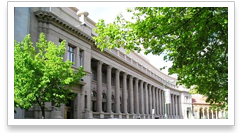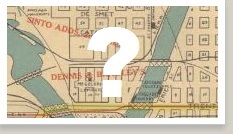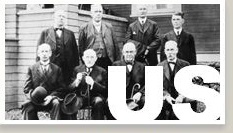Historic Properties of Spokane
Union Block

The Union Block, located at 218 North Howard Street, is a strong example of Richardsonian Romanesque commercial architecture in downtown Spokane. Built in 1890, the three-story structure is eligible for listing on the Spokane Register of Historic Places under Category A (Commerce) for its association with the wave of mixed-use commercial and residential buildings constructed immediately after Spokane’s Great Fire of 1889.
Designed by Herman Preusse, Spokane’s first professional architect, the Union Block reflects his early influence on the city’s post-fire rebuilding. Preusse, a German immigrant, partnered with Julius Zittel and designed many of Spokane’s landmark structures, including the Fernwell and Peyton Buildings, St. Aloysius Church at Gonzaga, and Turner Hall (the German American Society Hall).
The building underwent a major storefront remodel in 1972, announced in a May 1972 article as an effort to blend “the elegance of the past with the efficiency of the present,” at a cost of $200,000. The renovation introduced exposed brick and wood beams, unifying the façade by extending the upper-level arches and pilasters to the ground floor. The south bay became a Taco Time, while the north bay housed Myke’s West men’s clothing store. A more recent 2021 renovation replaced upper windows and added eight apartments.
Today, the ground floor is home to Steelhead Bar & Grille (south) and Atticus Coffee & Gifts (north). The upper floors contain modern apartments featuring murals, kitchens, and full amenities. In the basement, a series of nature-themed murals—believed to be painted by local artist Luke Williams in the 1930s—remain a unique feature.
The Union Block retains strong integrity of location, materials, workmanship, and association. It is significant under Category A (Commerce) for its role in Spokane’s post-fire redevelopment, and under Category C (Architecture) as the work of a master architect. Two periods of significance define its history: 1890 (construction) and 1972 (major remodel). Despite recent window replacements, the building continues to embody the character of Spokane’s late 19th-century rebuilding era and stands among roughly ten surviving structures from that pivotal period.
Hold for Management Agreement




